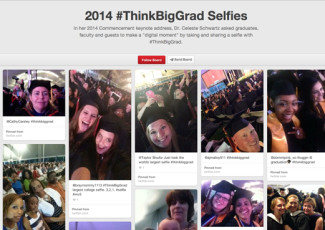Part 2: Should Community College Admins Tweet?
By Sarah Asp Olson
December 17, 2015
San Antonio College’s social media coordinator offers her take on why and how social media should play a role in community college communications.
Editor’s Note: This is the second article in a two-part series about how community college leaders are using social media.
Social media is an increasingly valuable — and prevalent — tool among community college administrators. A 2011 survey, The Role of Social Media in Community Colleges, found that 24 percent of administrators used social media daily for professional use. When asked to what extent social media would likely play a role in the next two years, 67 percent of participants responded either “to a moderate extent” or “to a great extent.”
Melissa Aguirre, San Antonio College’s (SAC) coordinator of communications, heads up the college’s social media efforts and has had great success in increasing student engagement online. From 2012 to 2013, SAC’s Facebook “likes” increased 48 percent. The college is now communicating across five social media platforms, with a total of about 27,000 followers. In 2013, SAC launched its Be SAC Proud graduation campaign, a social media push that used Facebook and Twitter to increase student engagement and participation in graduation events. The campaign won a Paragon Award from the National Council for Marketing and Public Relations and earned SAC 618 new Facebook followers over three months.
We asked Aguirre what role social media has played on her campus, and how others may benefit from getting social online.
What is your philosophy for using social media at San Antonio College?
Our philosophy is to create an integrated communication approach, in which we align social media efforts with the overall branding and marketing efforts for the college.
Why is it important for today’s community college administrators to understand and effectively use social media?
It’s incredibly important because social media is how our world communicates, and, most importantly, it’s how our stakeholders (students) choose to communicate. Social media is also about having content, communication and connection readily available at the tip of our fingers. Social media makes an organization or college administrator easily accessible to their students in a world of red tape.
What tips can you offer community college administrators who want to get started with social media?
Keep it consistent, frequent, timely and simple. Don’t overwhelm yourself. Figure out which social media site would have the most influence, and start there. Once you’ve mastered that medium, expand to the next.
Any tips on what not to do when tweeting and posting?
Don’t use the word “I.” In every communication, you are representing your organization, whether it’s a post, tweet, or direct message.
Should administrators post under their own names?
In my opinion, it should be a general college handle, for professionalism and to protect the college. If a college president begins a handle and then leaves the college, the president’s followers are then tied to that handle that now is going unused.
How do best practices vary among platforms?
Each social media site has its own constraints. They also should be used for very different types of communication. Twitter, of course, has the 140-character count. In Snapchat, you can’t have a clickable link, because the snap is only visible for 24 hours. This means we may have to change our message slightly from how we choose to communicate.
What is the best way for administrators to get into stakeholders’ feeds?
Know their social media site. Understanding how social media sites work allows administrators to cater their messages and tactics to reach their goals.
In April 2016, you’ll lead a seminar on how SAC has increased engagement through the use of social media. What can participants expect to learn?
The seminar is entitled Giving Purpose to Your Community College Social Media. The main objective in this training is to identify how a college can be strategic when communicating with stakeholders through social media.
Read yesterday’s article here.






